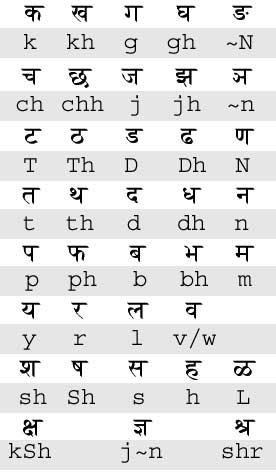
|
Devanagari is written horizontally from left to right. The Shirorekha, a horizontal bar, connects the characters of a word. A single or double vertical line, called danda is used to indicate the end of a phrase or sentence. Although Devanagari has a native set of symbols for numerals, nowadays Arabic numbers are typically used. In modern practice, English punctuation is sometimes used. Devanagari has 37 consonants ("Vyanjanas"), and 16 vowels ("Svaras"). A syllable ("Akshara") is formed by the combination of zero or one or more consonants, and one vowel. 

In addition, Devanagari script also has compound characters. Examples of some compound characters are below. 
The presence of such modifiers and combined characters presents a huge challenge to Devanagari OCR. The OCR of Devanagari script becomes a tougher job when we consider ancient documents, degraded to different levels. Devanagari text can be represented in many ways - Using a native font set, Transliteration or Unicode formats. A sample transliteration map is shown below. Transliteration is a phonetic representation of Devanagari characters in Roman script.  Transliteration Scheme for Vowels |
